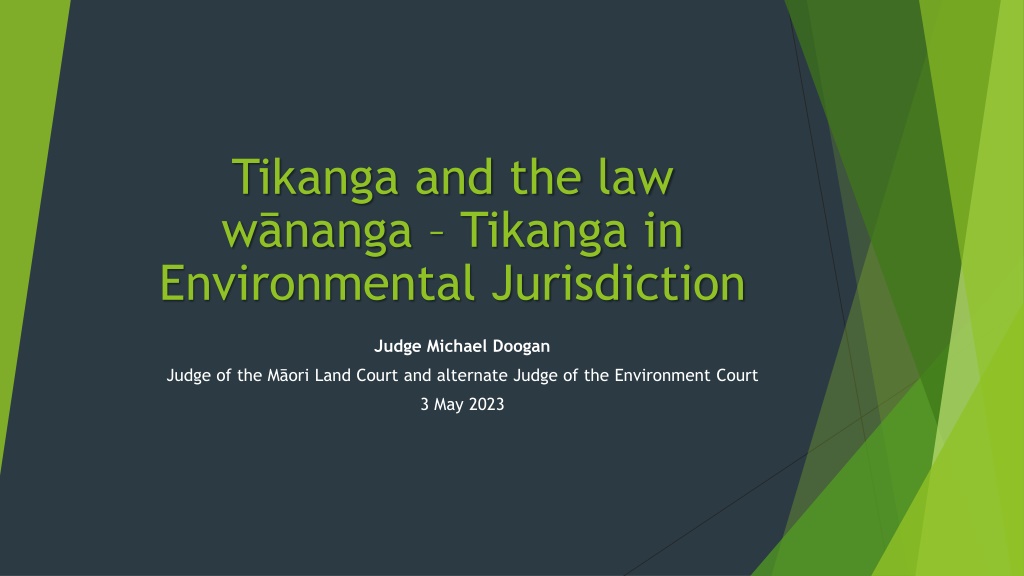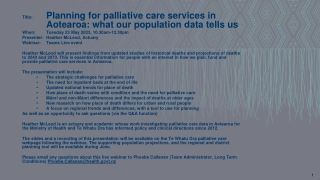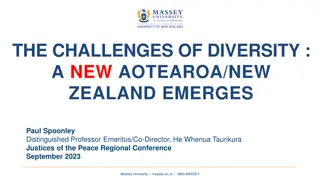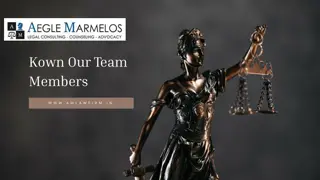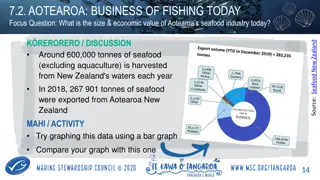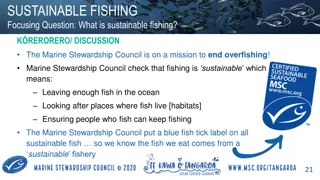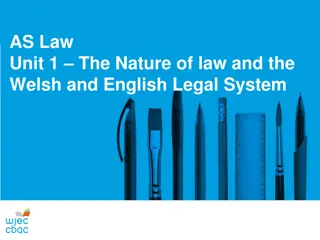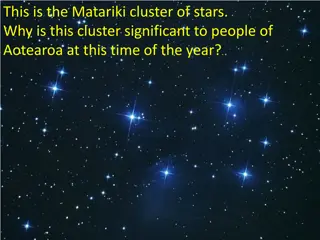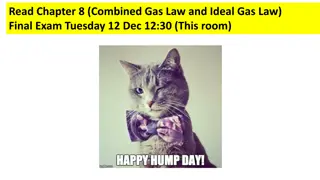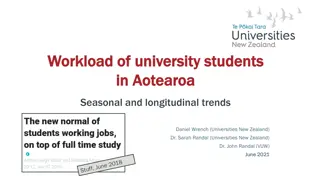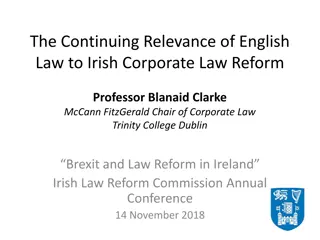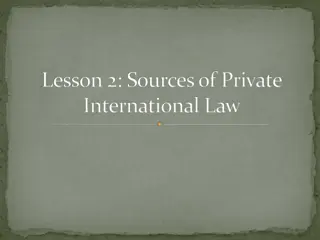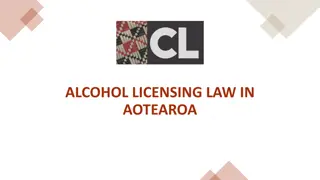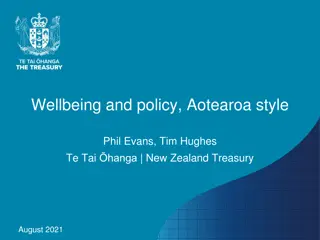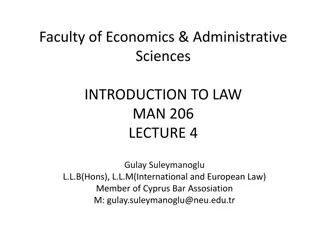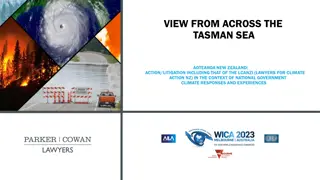Understanding the Significance of Tikanga as the First Law of Aotearoa
Explore the evolution of Tikanga in New Zealand's legal framework, touching upon its roots, collision with British law, and modern-day recognition as the first law of Aotearoa. Learn how Tikanga influences legal jurisdictions, environmental management acts, and the preservation of Māori customs within the three layers of the country's legal landscape.
Uploaded on Aug 14, 2024 | 0 Views
Download Presentation

Please find below an Image/Link to download the presentation.
The content on the website is provided AS IS for your information and personal use only. It may not be sold, licensed, or shared on other websites without obtaining consent from the author. Download presentation by click this link. If you encounter any issues during the download, it is possible that the publisher has removed the file from their server.
E N D
Presentation Transcript
Tikanga and the law w nanga Tikanga in Environmental Jurisdiction Judge Michael Doogan Judge of the M ori Land Court and alternate Judge of the Environment Court 3 May 2023
Three topics: How tikanga as the first law of NZ affects the express incorporation of Treaty and M ori concepts in the Resource Management Act 1991, particularly the Part 2 provisions. The jurisdiction with regard to relational or mana whenua issues (s 6(e)). extent of the Environment Court s Suggestions that may assist counsel to advocate well in relation to Environment Court. tikanga issues in the
Lex describes the law in NZ as having been laid down in three layers and that we are now operating in the third layer Aotearoa, Williams J Tikanga as the first law of Aotearoa The first layer was a system of law that emerged from what Kupe, Toi and other voyagers brought here and has come to be known as tikanga M ori.
Tikanga as the first law of Aotearoa The second layer arrived with the British and collided with M ori customary law. Tikanga was explicitly viewed as a temporary expedient in the wider project of extinction and cultural assimilation. rejected and
The third layer begins in the 1970s with increasing political and legal recognition of custom law. The third law is predicted on perpetuating the first law. The recognition of customs (tikanga) in the modern era is different and: Tikanga as the first law of Aotearoa It admittedly within the broad confines of the status quo, transformative. is intended to be permanent, and
Tikanga as the first law of Aotearoa But in fact all three layers are still alive and interacting organically.
Sir Hirini Moko Mead: TikangaMori focuses on the correct way of doing something. Justice Joe Williams: ... Tikanga M ori: tika meaning correct, right or just; and the suffix nga transforms tika into a noun, thus denoting the system by which correctness, rightness or justice is maintained. And: tikanga and law are not co-extensive ideas. Tikanga includes customs or behaviours that might not be called law but rather culturally sponsored __ Tikanga an overview Durie J: conceptual regulators. Ani Mikaere: enabled change while maintaining cultural integrity. See also pending study paper TikangaM ori for Te Aka Matua o Te Ture Law Commission Whata, J and Statement of Tikanga of Sir Hirini Moko Mead and Professor (Sir) Pou Temara 31 January 2020 appendix to Judgment of Supreme Court in Ellis (2022) NZSC 114.
Comes to the EC through statutory doors and windows. Tikanga as first law in the Environment Court The Court has no inherent jurisdiction and the task of declaring or affirming tikanga based rights in state law rests with the High Court and/or the M ori Land Court. Ng ti Maru Trust v Ng ti Wh tua r kei (Whata J).
The Part 2 provisions include three requirements: Statutory Scheme Resource Management Act 1991 relevant provisions First, in order to achieve the sustainable management purpose of the Act, it is deemed a matter of national importance that all persons exercising functions and powers under the Act must recognise and provide for: The relationship of M ori and their culture and traditions with their ancestral lands, water, sites, w hi tapu, and other taonga Second, in achieving the purpose of the Act, all persons exercising functions and powers shall have "particular regard to": a) Kaitiakitanga ... Thirdly, in achieving the purpose of the Act, all persons exercising functions and powers must "take into account" the principles of the Treaty of Waitangi.
Statutory scheme continued TikangaM ori is defined in the RMA as M ori customary values and practices. That definition is not to be read as excluding tikanga as law, still less as suggesting that tikanga is not law. Rather, tikanga is a body of M ori customs and practices, part of which is properly described as custom law. (Supreme Court, Trans-Tasman Resources Limited v Taranaki-Whanganui Conservation Board) There is a hierarchy of obligation. At the high end, the requirement is to "recognise and provide for" (s 6) then to have "particular regard" (s 7), and finally to "take into account" (s 8).
Statutory scheme Kaitiakitanga is defined as the exercise of guardianship by tangata whenua of an area, in accordance with tikanga M ori; in relation to natural and physical resources; and includes the ethics of stewardship . Tangatawhenua means in relation to particular area, the iwi, or hapu, that holds mana whenua over that area. Manawhenua is defined as meaning customary authority exercised by an iwi or hap in an identified area.
Statutory scheme The intersecting definitions of kaitiakitanga, tangata whenua and mana whenua place emphasis on collective customary interests and authority, held at the iwi or hap level.
Numerous other provisions of significance, but note: Local authority and consent authority shall recognise tikanga M ori appropriate evidence written or spoken in M ori (s 39(2)(b)). The shall M ori where appropriate (s 269(3)). Environment recognise Court tikanga where receive and
Some ongoing tensions between second and third law to be aware of: Should[M ori] attempt to carve out a small space within the whare of the state legal system if the whenua and foundations upon which it is built are defective? Natalie Coates. Space for rangatiratanga to operate. Kei whawhati noa mai te rau o te r t - the rata tree (some things are perfect just the way they are) Don't pluck the blossoms off
Nature of the Treaty relationship Waitangi Tribunal The Crown has intruded in harmful ways into areas guaranteed to M ori. M ori must be given the right to chart their own path towards realisation in contemporary times of the Treaty promise of rangatiratanga over kainga (Waitangi Tribunal He P harakeke, He Rito Whakak kingaWh ruarua Oranga Tamariki Inquiry 2021, p183, 184) The Treaty guaranteed to M ori their Tino Rangatiratanga minimum the determination and autonomy That included the right to work through their own institutions of governance and apply their own tikanga or system of customary laws. (Waitangi Tribunal Te Mana Whatuahuriri: Report on Te Rohe Potae claims 2018 pg 158-169) Rangatira did not cede authority to make or enforce law over their people and within their territories. They agreed to share power and authority with the Governor, with whom they were to be equal though with different roles and different spheres of influence. (Waitangi Tribunal He Whakaputanga me te Tiriti pages 526-527). the Treaty was at a right to self
Environment Court jurisdiction regarding relational or mana whenua issues when addressing the s 6(e) RMA requirement to recognise and provide for the relationship of M ori and their culture and traditions with their ancestral lands, water, sites, waahi tapu and other taonga, a consent authority, including the Environment Court, does have jurisdiction to determine the relative strengths of the hap /iwi relationships in an area affected by a proposal, where relevant to claimed cultural effects of the application and wording of the resource consent conditions. (Whata J, Ng ti Maru trust v Ng ti Wh tua r kei).
So: The Environment Court is necessarily engaged in a process ascertainment of tikanga M ori where necessary and relevant to the discharge of express statutory duties. And further: But any assessment of this kind will be predicated on the asserted relationship being clearly grounded in and defined in accordance with tikanga M ori and m taurangaM ori and that any claim based on it is equally clearly directed to the discharge of the statutory obligations to M ori and to a precise resource management outcome. Where iwi claim that a particular outcome is required to meet those directions in accordance with tikanga M ori, resource management decision makers must meaningfully respond to that claim, including when different iwi make divergent tikanga based claims as to what is required to meet the Part 2 obligations. This may involve evidential findings in respect of the applicable tikanga. To hold otherwise would be to emasculate those Part 2 directions of their literal and normative potency for iwi. (Whata J, Ng ti Maru trust v Ng tiWh tua r kei).
But note need for caution in these types of assessments: Where there are layers of interests in a site, all the layers are valid. They derive from centuries of complex interaction with the whenua and give all the groups with connections mana in the site. For an external agency like The Office of Treaty Settlements to determine that the interests of only one group should be recognised, and the others put to one side, runs counter to every aspect of tikanga we can think of. It fails to recognise the cultural resonance of iconic sites, and the absolute imperative of talking to people directly about what is going on when allocation of exclusive rights in maunga is in contemplation. (Tamaki Makaurau Settlement Process Report: Waitangi Tribunal 2007) See Ng i Te Hap Inc v Bay of Plenty Regional Council [2017] NZEnvC 73 at [82] See also Motiti Report on the Te Motere o Motiti Inquiry: Waitangi Tribunal 2023 for examples of forensic weighting of competing mana whenua or customary authority claims.
the rule of reason approach (NgtiHokop): whether the values correlate with physical features of the world (places, people); Some metrics for the exercise of the jurisdiction to consider relational claims: peoples' explanations of their values and their traditions; whether there is external evidence (e.g., M ori Land Court Minutes) or corroborating information (e.g., waiata, or whakatauki) about the values. By 'external' we mean before they became important for a particular issue and (potentially) changed by the value holders; the internal consistency of peoples' explanations (whether there are contradictions); the coherence of those values with others; how widely the beliefs are expressed and held. In a Court, of course, values are ascertained by listening to and assessing evidence dispassionately with the assistance of cross-examination and submissions. Further, there are 'rules' as to how to weigh or assess evidence.
An example: Mt Messenger case (Mt Messenger (Director General of Conservation vs Te Runanga o Ng ti Tama Trust and others [2019] NZEnvc) The case concerned a planned upgrade of the Mt Messenger section of a state highway east of New Plymouth. Required for the project was over 20 hectares of land returned to Ng ti Tama as part of its 2003 Treaty of Waitangi Settlement. Some features to note: A public authority with compulsory acquisition powers wishes to acquire land returned to M ori under a Treaty settlement M ori with whakapapa to a different area assert tangata whenua status Non-M ori assert tangata whenua status Internal conflict within an iwi/hapu Evidence including expert evidence Role of counsel
The Court cited with approval the following submission of counsel for Ng ti Tama: Tangata whenua and mana whenua are accorded special recognition and rights under the RMA. As the Privy Council has noted, these rights are "strong directions to be borne in mind at every stage of the decision-making process". These rights are hard won and reflect the culmination of over 150 years of protest and advocacy on behalf of M ori. It is therefore extremely important that such rights are reserved for tangata whenua/mana whenua alone. Extending such rights to non tangata whenua/mana whenua interests, is inconsistent with the RMA, and diminishes both the value and meaning of such rights, and the mana of the iwi or hap that holds mana whenua.
Some observations: Early recognition by Waka Kotahi that it would not be right to use compulsory powers and early appointment of external consultant to manage engagement with Ng ti Tama and other M ori. Commitment not to proceed with the preferred road realignment unless agreement could be reached with Ng ti Tama. Relevant findings: Ng ti Tama has mana whenua over the project area and it is therefore appropriate that it be the only body referred to in conditions addressing cultural matters. Neighbouring land owners also effected by the proposal (the Pascoes) are not kaitiaki in the sense that the word kaitiakitanga is used in the Act. The relationship of the Pascoes to the land is of stewardship. A collective known as Poutama are not tangata whenua exercising mana whenua over the project area and therefore not appropriate that they be recognised in any consent condition addressing cultural matters.
How to advocate well on tikanga and the law Tikanga: ( integrate to perpetuate ) Williams J, Lex Aotearoa. When tikanga comes to the Environment Court, the Court must have evidence grounded in and defined in accordance with tikanga M ori and matauranga M ori to make the best decisions. The best evidence of tikanga M ori and matauranga M ori will of course be in te reo M ori.
Cultural competency: what does it mean? Build and maintain capability in te reo. Building and maintaining understanding of Treaty of Waitangi jurisprudence, both the Courts and the Waitangi Tribunal. If a non-M ori practitioner acting for M ori hapu or iwi, you may not be able to locate, understand or receive most relevant tikanga knowledge and evidence unless the knowledge holders trust you. The more central the knowledge to hapu or iwi identity, the harder it will be to earn that trust. It will also take time.
No matter how good you are as an advocate, you are very unlikely to be trusted with tikanga or matauranga M ori unless you show genuine respect for it. The same general point applies to Court procedure. It is now far more common across courts in all jurisdictions to allow appropriate space for mana whenua to open and close proceedings with mihi and karakia. If procedure on the day is uncertain or unclear, counsel should advocate for this and also if leading tikanga evidence in te reo M ori ensure that the Court is notified early so that arrangements for simultaneous translation are made (if possible). Where appropriate, propose that the Court sit on the relevant marae (or similar venue) to receive tikanga evidence.
Be sensitive to the ongoing affects of the second law: Tikanga and M ori society, more generally, have been subject to the devastating impact of colonisation on its institutions and practises. This is meant that for many M ori, they have become alienated from their lands, culture and are unfamiliar with tikanga. (Statement of M tanga Ellis case at para 38) Tikanga, Cross-examination where there is competing evidence as to tikanga may be required, but try to first narrow issues in contention pre-hearing and be aware that traditional adversarial cross-examination of a Pou Tikanga will seldom be productive or helpful. Allegations of bias or suggestions that the evidence may not be genuinely held are not likely to be viewed favourably by the Court (Greymouth Petroleum v Heritage NZ [2016] NZEnbC11). Be aware of, and where appropriate, use extrinsic evidence as context for tikanga evidence such as reports of the Waitangi Tribunal and primary sources such as texts on tikanga M ori.
